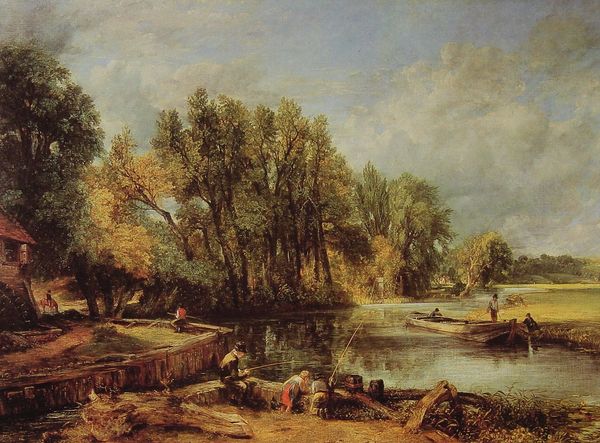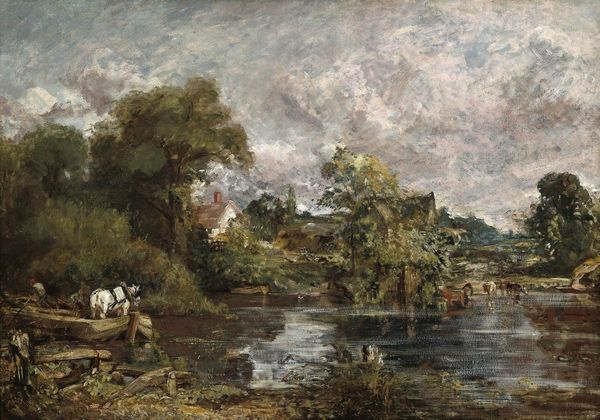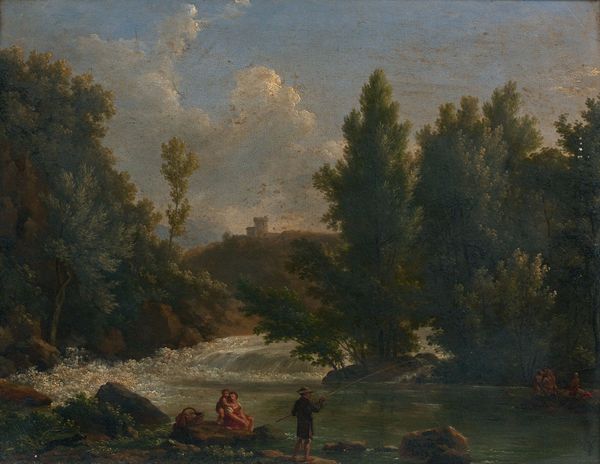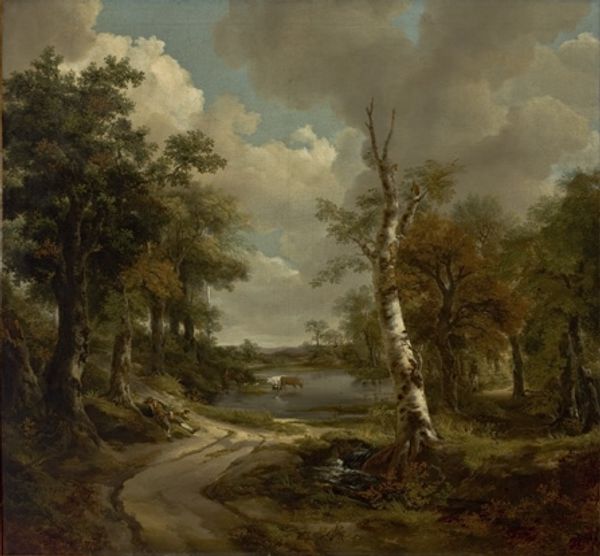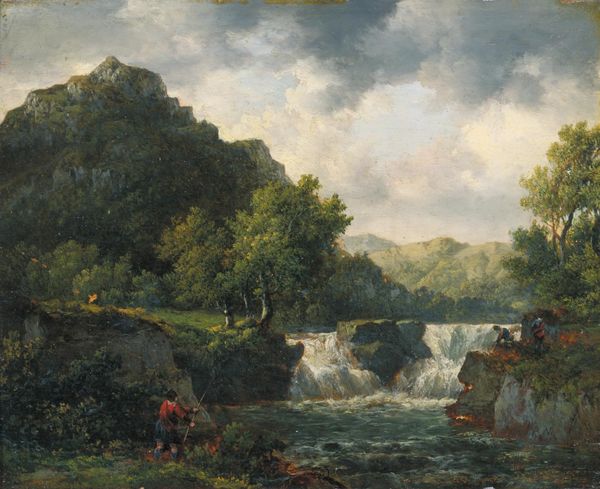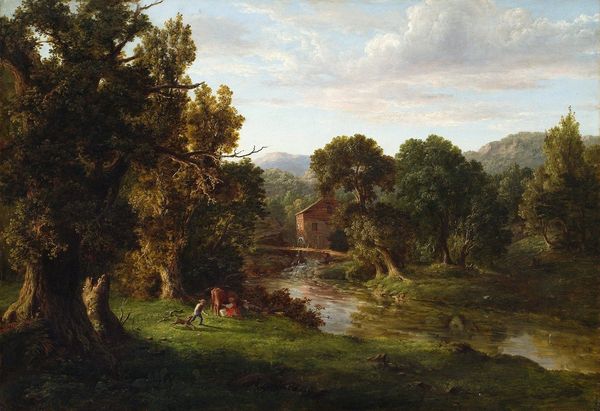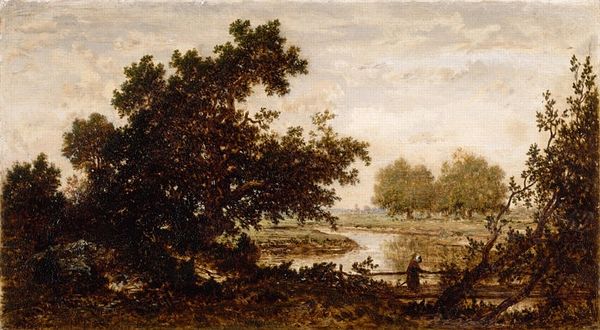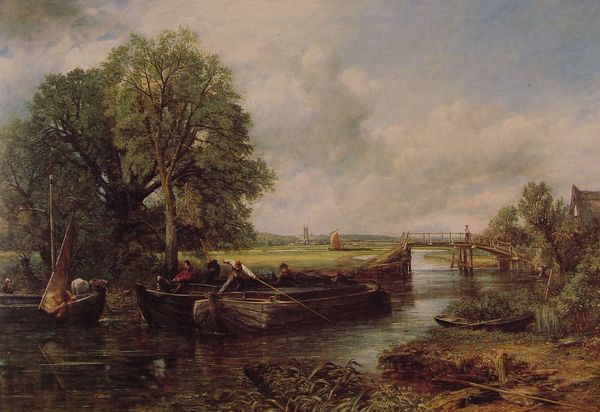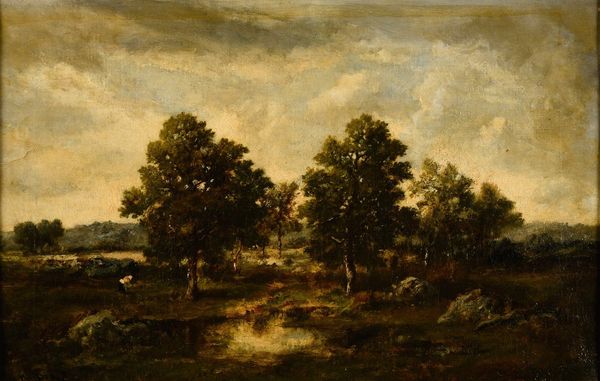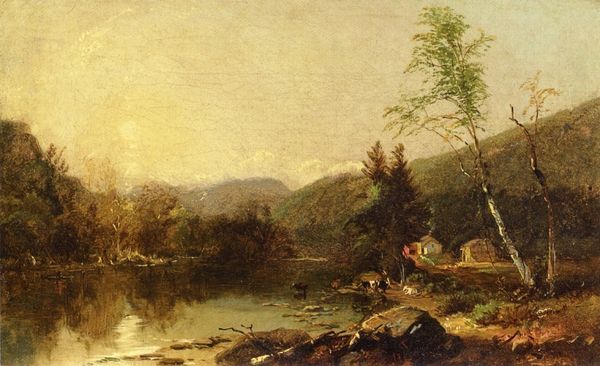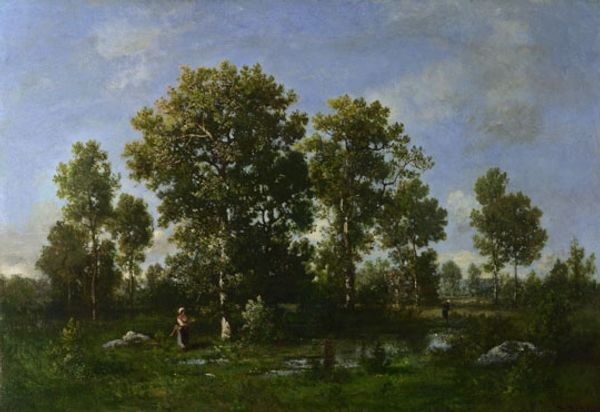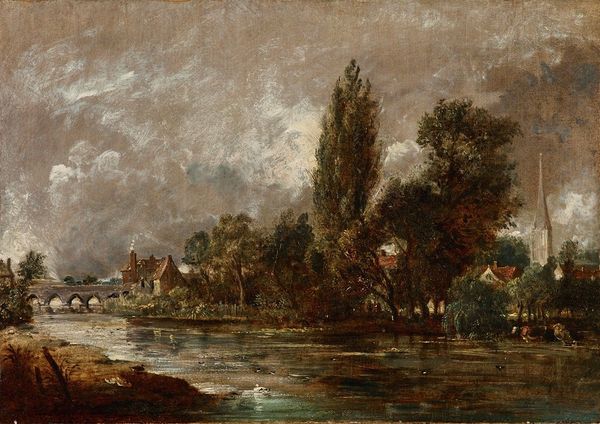
painting, plein-air, oil-paint
#
painting
#
plein-air
#
oil-paint
#
landscape
#
oil painting
#
romanticism
Copyright: Public Domain: Artvee
Curator: What a captivating scene! It has such a distinctive atmospheric quality. Editor: Indeed. John Constable’s "Stratford Mill," painted around 1819-1820 using oil on canvas, pulls us right into a rural idyll. It really is as Romantic as it gets. Curator: It feels almost haptic, doesn't it? The way he’s rendered the clouds – pregnant with rain, the tangible weight of them hanging over the water. And the way that light dances through the foliage, it gives this idyllic view a kind of spiritual heaviness. Editor: Constable sought truth in nature, a kind of moral underpinning that could only come from directly observing it. The mill becomes an important symbol, too: these kinds of infrastructures powered England, marking a new social fabric dependent on industry rather than simply agriculture. What does it suggest to you? Curator: I think it’s speaking to something about the inherent connection, and sometimes the conflict, between the natural and man-made worlds. Notice how the figures blend almost seamlessly into their surroundings; the trees and river appear to cradle these lives. This isn’t just about observation, it is deeply intertwined with the feeling of how the earth and structures are so intertwined with our own lives and mortality. It almost serves as a visual metaphor for the cycles of nature, the way that birth and decay, destruction and renewal, constantly intertwine. The wheel even looks almost coffin-shaped, which adds an uncanny mood. Editor: That's an insightful point. While the painting seems peaceful on the surface, this location, near Constable’s hometown, also represents profound changes sweeping across England during that era. I am curious as to the politics of painting. Was the piece well received during that time, or seen as somehow ‘othering’ a modern industrialized society by reflecting pastoral scenes? Curator: I'm more taken with his specific visual vocabulary to suggest enduring harmony with a world constantly threatening to disappear. He imbues objects with layered symbols so that a simple landscape painting is laden with questions, doubts and faith that make us pause to meditate on these meanings in an increasingly anxious present. Editor: That's a generous and lovely point, thank you. I suppose paintings of idealized rural life were popular at the time for very specific social and cultural reasons—and continue to be today! Curator: Exactly, they allow us space for the potential, however nostalgic or naïve, that still might be available for the soul.
Comments
No comments
Be the first to comment and join the conversation on the ultimate creative platform.
